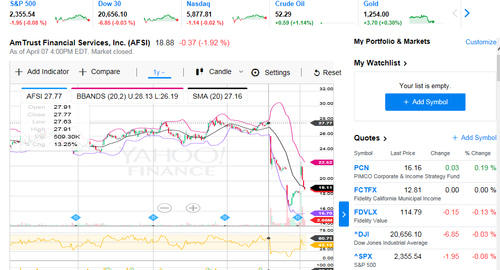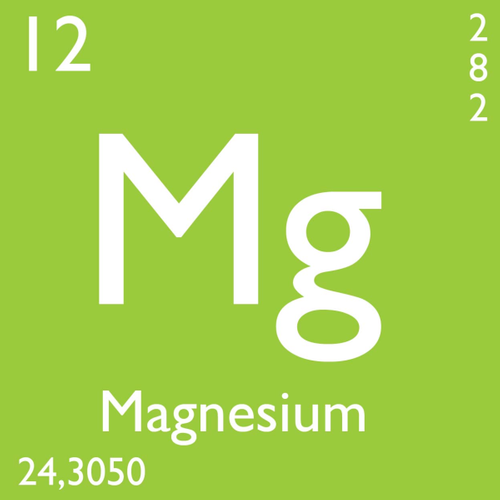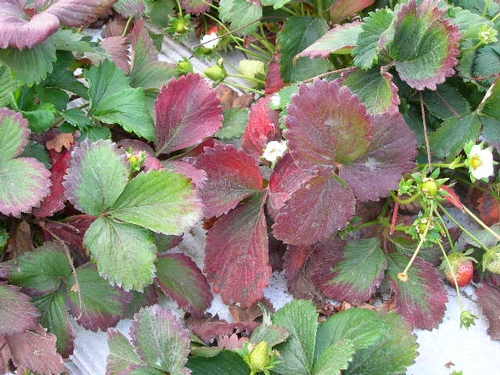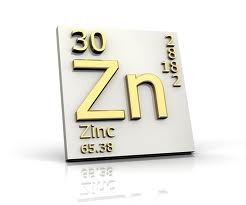Posts Tagged: nutrition
The Signal and the Noise: The Problem Facing Growers Struggling with Too Much Data
Pretty decent article here from the Capitol Press on how growers are struggling with how to make sense of the really large amounts of data so easily available to them in our increasingly technological age.
The fact of the matter is that reduced computing costs have created an enormous wave of information, and in a recent article in the Wall Street Journal written by Michael Milken and Igor Tulchinsky, caution us to buckle up because this already large tsunami of data "doubles in size every few years". The two authors, while conceding that this is a challenge, also recognize it as an opportunity.
As many are finding, the problem of understanding the meaning of lots and lots of data is deeper than just pressing the whole undifferentiated mass into Google and getting an actionable answer. I would suggest it is rather more a matter of sorting out the unimportant data from the important, and then having the mastery of that body of knowledge to which the data refer and only then be able put it all together to arrive at a good decision.
The book titled "The Signal and the Noise", written by statistician Nate Silver makes some progress on this issue. A lot of the data available to decision makers and prognosticators in a wide range of fields, from weather, to markets, to sports events, to elections, and yes to agriculture is not that useful, is not worth listening to and can be called noise, while those bits that are really useful, the signals, are where we should be spending our time and attention.
Complicating this however is the fact that it's very rarely just one signal that merits our attention, but rather it can be a multiple or even further an interaction of these signals which is most meaningful, and yet not all are as equally important. Take for the example the malnourished plant with a compromised root system. Is the malnourishment truly just the roots, or do we also face some deficiencies in the soil? What of the soil pH or CEC which might be impeding the transmission of these nutrients to the plant? The knowledgeable person is going to know what compromises a root system, what soil nutrient deficiencies look like, what a pH of x means to the whole shebang and weighs its value, pieces the important parts together, discards the rest and then makes the call on how to proceed.
In short, it is a deception to think that simply having access to ever greater amounts data effortlessly bestows upon one the ability to make better and more accurate decisions. Really it takes some accomplishment, experience and quite frankly a lot of hard work as an individual to sort out the signals from the noise, and further be able to put this concert of signals into a comprehensible whole.

What were the signals and what was the noise for investors to avoid this near 50% schmeissing on this insurance stock? A clue, the big signal isn't even here.

That about sums it up.
Thinking Deeply about Magnesium
Magnesium (Mg) has several purposes in the plant, one of the main ones being the central position in the ring of the chlorophyll molecule. Thus, it is very important for plant photosynthesis. The other roles magnesium has in plants are parts in respiration and energy metabolism. Magnesium is considered a secondary plant nutrient, because it is needed in fairly large amounts by plants.
Magnesium moves with the water to the roots of the plant as the cation Mg2+, meaning the plant does not actively take it up and making root surface size and area an important factor in accumulation. Therefore, Mg2+ deficiency can occur when root growth is comprised or the soil is too dry. Interpreting soil analyses for magnesium content is not easy, because it is usually not the total amount that determines whether a deficiency can occur, but the relative proportion of Mg to calcium and potassium in the soil. Furthermore, high levels of magnesium can cause deficiencies of these other nutrients as well.
When interpreting soil analyses, bear in mind that “exchangeable Mg2+” and “saturated paste analysis Mg2+” are not measuring the same thing. Only a percentage of exchangeable Mg2+ is available to the plant at any given time, the rest being bound to soil particles, colloids and organic matter. The saturated paste analysis better represents what the plant root would encounter at the time of sampling, but this number will vary with the amount of rain or irrigation at that time.
A rule of thumb would be that saturated paste soil test values for Mg2+ above 0.5 meq/l represent sufficient amounts. Pajaro and Salinas Valley soils tend to be well above this threshold and thumbing through my numerous soil analyses taken from these areas from the past few years, I'm not finding a single one underneath it.
Being as they are fundamentally chemistry labs, many soil analysis reports will be expressed in other units. Some labs report soil magnesium as ppm exchangeable Mg, for example “82 ppm”. For magnesium, meq/100 g x 120 = ppm. Therefore, 82 ppm Mg is the same as 0.7 meq. Luckily, most labs also provide some sort of graph that shows where the nutrient lands on the sufficiency index. Most soils are not considered deficient unless exchangeable Mg is less than 25 – 50 ppm.
Magnesium comes from rock and clay particles as they weather over time. The needs of strawberries and caneberries are around 40 -100 lb of Mg2+ per acre per season, meaning that soil analysis prints above several hundred pounds or even in the thousands in the top six inches indicate sufficiency (Mg ppm x 2 = lbs/top 6” of soil). Again, since this is measured as exchangeable magnesium, not all of it is available at any given time.
A low soil pH under 5.4 can be restrictive for plant magnesium availability, and to a lesser extent (because there is so much magnesium already around) other cations such as potassium and calcium can also contribute to deficiency. For example, plant deficiencies of magnesium can occur in soils where the calcium to magnesium ratio (Ca/Mg ratio) exceeds 7 on a meq basis. High levels of exchangeable potassium can also interfere with magnesium uptake. Conversely, the opposite is true. For example, in soils derived from serpentine rocks exchangeable magnesium can exceed calcium. This can cause some interesting plant growth characteristics in other crops, such as yellow shoulder in tomatoes where these are grown on high magnesium soils common to the west side of the San Joaquin Valley.
Looking at the revision of plant nutrient levels produced by Tim Hartz et al in 2012, sufficiency levels of Mg in strawberry leaf tissue are 0.33 – 0.45 % prior to the onset of fruiting and then at 0.2 to 0.4 % during the harvest season. In caneberries, according the Dr. Bernadine Strik at OSU, the optimum range is just a bit higher, with recommended values being 0.3 to 0.6 % during fruiting.
http://www.oregon-strawberries.org/attachments/2013-May_Nutrient_Management_Berry_Crops_OSU.pdf
Really a take home conclusion here is that most, if not all, of our Pajaro and Salinas Valley soils are well supplied with magnesium, and any deficiencies, should they arise, are stemming from physiological problems of the plant or chemical properties of the soil.

What is the role of the element magnesium in berry culture?
Link for Strawberry Nutrition Talk at NASGA
I have had a lot of requests for posting the talk I gave last week Thursday at the North American Strawberry Grower's Association meeting in Ventura. Great meeting by the way, totally a who's who of the industry, with top flight scientists from public institutions and the private sector sharing information on a giant range of topics in strawberries.
http://cesantacruz.ucanr.edu/files/206904.pdf
A Primer on Nutrient Deficiency Symptoms and How to Address Them
Here is a really nice article from Robert Mikkelson with the International Plant Nutrition Institute (IPNI), great website overall actually.
The link below goes to the full article, but I'll capture a few highlights in a summary:
Plant nutrient deficiency symptoms appear when a nutrient is lacking, but this can have multiple causes. It can be because root activity is low because of soil saturation and low temperatures, or it can be poor uptake from disease or mechanically damaged roots. And of course low nutrient supplying power on the part of the soil can be part of the equation as well. The field practitioner needs to get the full picture.
Deficient plants do not initially show any signs of nutrient shortage other than growing slower and having an more uneven, lower yield. At the point that deficiency symptoms become visible, the crop is already severely stressed and although it's already quite late to do so, steps must be taken to correct the deficiency. This is an important point, and definitely part of the reason I constantly push for growers and agricultural professionals to be taking tissue samples at several points through the season to catch deficiencies and problems before they deal irreversible damage to the crop.
Speaking of those tissue samples, take tissue samples from healthy areas at the same time you take samples from the deficient areas (I take two of each at a minimum). That way you can compare the two areas and more easily identify what is deficient. It's also useful to take soil samples from those same healthy and deficient areas at the same time of tissue samples in order to get a fuller view of what is going on.
Here's the link, Dr. Mikkelson does a way better job of explaining this than I do:

Severely purpled leaves on Albion. What's the deal here?
Zinc Nutrition of Soils and Crops in the Salinas Valley
Excellent article posted on the Salinas Valley blog by colleagues Richard Smith and Tim Hartz on zinc nutrition of crops and soils in the Salinas Valley.
Key takeaways:
1- Historically zinc deficiency was common in California, but now because of widespread use of zinc fertilizers, zinc deficiency is pretty rare. I concur, and as a matter of fact have yet to find a single plant sample which was deficient for zinc.
2- Bioavailability of zinc is limited by increasing soil pH, high clay content, high phosphorous and low soil temperature.
3- Tissue zinc sufficiency is between 15- 30 ppm (anecdotal note- blackberries tend to be in the range of 40 ppm)
4- Most common soil zinc test is DTPA extraction, which gives a good estimate of what is plant available. Generally, soil DTPA extracts from 0.5 ppm - 1.5 ppm means crop plants in that soil would probably respond to the addition of a zinc fertilizer, while a test above 1.5 ppm means there likely will be no plant response to zinc addition.
You really should read the whole article, it's quite good and definitely worth the while:
//ucanr.edu/blogs/blogcore/postdetail.cfm?postnum=13163

Zinc

